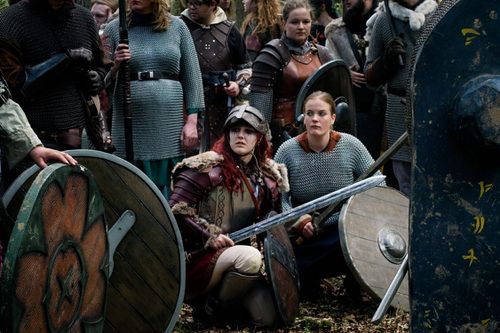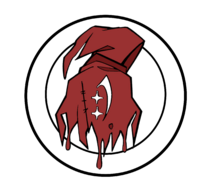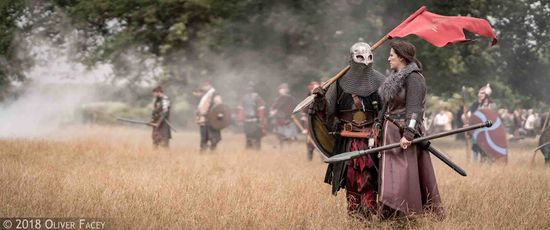Wintermark military concerns
Overview
Wintermark has a strong warrior culture. Everyone wants to be a hero, and there are many opportunities for heroic action on the battlefield. This means that while heroism does not have to mean fighting, it does for many Winterfolk. The warrior culture crosses all three traditions; while outsiders may think of the Steinr warrior in chain with runebound weapon and shield when they envision a Winterfolk warrior, the Suaq and the Kallavesi traditions stretch back to a time before the first Steinr set foot in Hahnmark.
The Steinr generally prefer close melee to archery or skirmishing, most often fighting with a one-handed weapon and shield and wearing layers of mail and thick leather. Their generals are often larger-than-life figures who lead from the front and seek out the counsel of the warbands they will lead before planning their strategies – but who brook no disagreement once the plan is decided.
The Suaq employ their hunting craft equally well in the forest and on the battlefield; their archers give close support to their spearmen who in turn look to attack the flanks and other weak points in their enemy's lines. Suaq generals pick their battles carefully, looking to make best use of the terrain and any situational advantage they can create for their army.
Kallavesi warriors tend to favour the axe, either a shorter axe in either hand or a long handled axe near as tall as a person. In battle they often try to take on the demeanour of a ferocious animal such as a boar, wolf or bear. They are alert for omens, reading the flow of the battle around them and anticipating threats and opportunities. Kallavesi generals work closely with the shamans to pick the most auspicious locations and strategies for a battle.
The generals of Wintermark, regardless of tradition, have a responsibility for their people and are expected to call a retreat if it becomes appropriate. A futile death is not a good death and once the order is given, warriors withdraw without shame or ridicule. Winterfolk strive not to rout – when they retreat it is a matter of tactics.
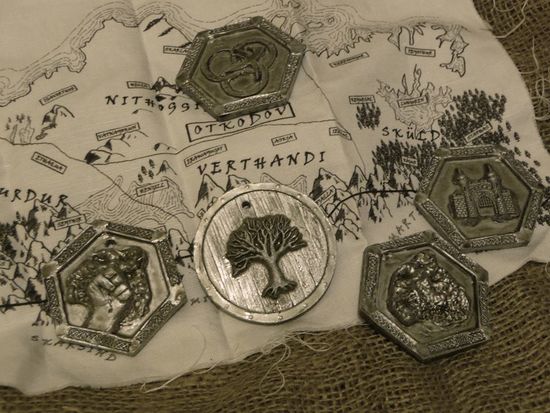
Banner-bearers
At the heart of most Wintermark forces is one or more banner-bearers. The banner-bearers, also known as bannermen or bannerwomen, are an old Steinr tradition. They are warriors whose role is to inspire and enthuse the rest of the warband. Most banner-bearers are skilled warriors, but their purpose is to rouse the courage and fighting spirit of their band. The traditional responsibility of the banner-bearers is to carry a warband's banner, a difficult and dangerous job that makes it impossible to carry a shield. Even if they are not personally carrying the banner, they tend to stay close to it as it is the heart of the unit.
Banner-bearers find many ways to motivate their colleagues. Steinr banner-bearers often carry instruments of war, drums, horns and the like to perform music on the battlefield to lift spirits. Kallavesi banner-bearers prefer to anoint their fellows with oils and use ancient tales to remind their comrades of past heroes. Some Suaq banner-bearers prefer to lead their warriors in song while others learn the chirurgeon's art.
Winterfolk generals know that the banner-bearers are key to the battle, and encourage the Thanes to pick wisely; a few good banner-bearers can change the course of the battle with their skills. In some situations a good banner-bearer is more important than the Thanes who actually command, because their presence can keep a group of warriors focused and prevent them routing. A wise general traditionally wants to have the banner-bearers present when strategy is discussed. While the Thanes may have insight into the situation, it is the banner-bearers who are relied on to remember the plan and make sure their comrades keep to it.
Grimnir
Especially important are the grimnir, Wintermarkers who have dedicated themselves to the healing arts. They combine the study of herbs and traditional healing methods with practical experience that is invaluable to the militaristic Wintermark society. While they have an important role to play on the battlefield, they have a wider role to see to the health of everyone in their hall.
While Winterfolk warriors are highly valued, those who keep those warriors alive and healthy are valued even higher. By ancient tradition the grimnir are forbidden from the front lines of any conflict; they are expected to hang back and keep themselves out of harms way. After all, a dead doctor heals no warriors. Some grimnir push this tradition to the limit, staying just behind the front line, but most take their responsibility seriously and carry out their work a safe distance away from the fighting.
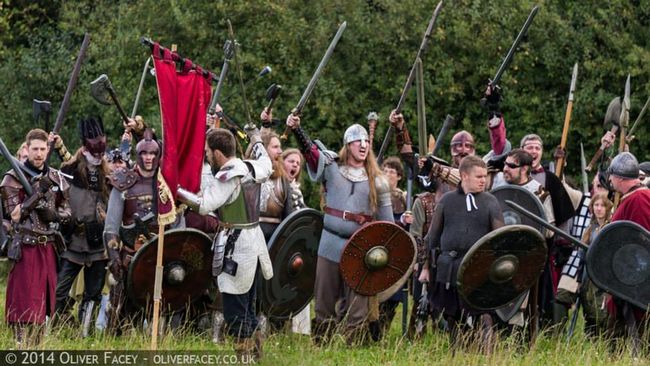
The grimnir are denied the obvious chances for heroism that warriors can find on the battlefield. Instead they work to the last to save the lives of their comrades rather than concerning themselves with renown. Most Wintermark warriors acknowledge this sacrifice, treating the grimnir with a profound respect. The grimnir can be all that stands between a warrior and a lingering, painful, futile death. During a battle it is normal for a grimnir to be accompanied by a few warriors, often those whose life they have saved. Unlike the grimnir, these warriors do not hang back; they are expected to fight their way through to the wounded and bring them to be tended by the grimnir.
The grimnir tradition began with the Suaq. In the past, the healers of the Suaq did not accompany the hunters into the wilderness but instead maintained the camp and prepared to heal those who were injured by wild beasts. The Steinr added their own traditions wherein the chirurgeon responsible for tending the wounded was also entrusted with the task of maintaining the hall or home – "good health is founded on a strong hearth". Consequently, while most Thanes aspire to be powerful warriors, it is not uncommon for a thane to be a sworn grimnir, seeing to the health of everyone who lives in their hall.
There are physicks and healers in Wintermark who are not members of the grimnir - they have not sworn the oaths to stand apart from battle and instead tend to the fallen. Such individuals are appreciated and valued, much as healers are in any land - it is merely that they do not receive the special kind of respect claimed by the grimnir by dint of the vows they have sworn.
Imperial Armies
Wintermark currently fields three Imperial armies; the Green Shield Army, the Bloodcloaks, and the Narwhal's Spear. The armies have undergone some change in recent years. partly as a consequence of a resurgent interest in heroism.
The Fist of the Mountains (Destroyed)
This army was supported by a number of miners, engineers and ex-prospectors, and the captains were regularly advised by clever icewalkers and proud scops. Centuries of fighting in the mountains of Sermersuaq, Skarsind and Hahnmark left their soldiers with a reputation for caution and for an ability to fight viciously in tight spaces over vertiginous drops. By heeding the words of farsighted advisors, the general was able to employ divination to allow them to find the perfect place to move their army. While such methods were unpredictable and difficult to make sense of, they meant the Fist of the Mountain was rarely where the enemy expected it to be - something made clear when the army prevented the Grendel from destroying the Great Harbour at Elos shortly before the Autumn Equinox 387YE.
The first Wintermark General led the Fist of the Mountains army, and was appointed at the Summer Solstice each year.
The Green Shield Army
The army of the Green Shield have fought in almost every campaign in the northern empire and have a long history of supporting the Varushkan and Navarr armies on campaign. They are also one of the few armies outside Navarr that have any experience fighting vallornspawn, usually in Hercynia.
Each soldier is equipped with an axe and a wooden shield with a green covering, usually decorated with a symbol in gold or white that marks the regiment the soldier belongs to. They are famed throughout Wintermark for their heroic deeds, and the presence of the Green Shields has turned the tide of battle more than once. The soldiers of the Green Shields are capable of impossible deeds, and their spirit is undiminished in the face of any threat. They know that the hero's tale ends with a good death and they are ready to pay with their lives if they must. Their esprit de corps is peerless and their commitment to battle means they are prepared to make any sacrifice to achieve what must be done. This allows their general to issue unique orders, taking enormous risks where necessary.
The second Wintermark General leads the Green Shield Army, and is appointed (or re-appointed) at the Winter Solstice each year.
The Bloodcloaks
The first Bloodcloaks army was destroyed by the Thule almost a century ago. Known for their crimson cloaks, the army was composed of many grimnir and mystics; all save a few were slaughtered in the reign of Empress Brannan during a disastrous retreat from Otkodov. They left behind a legacy of heroism and healing that was carefully nurtured by the descendants of its physicks. The various threads of the army's tattered skein persisted - a healer here, a family there. In Spring 379YE, the Imperial Senate refused to allow Wintermark to raise the Bloodcloaks standard once again; they did not relent until more a year later in Summer 380YE. The army finally mustered in Kallavesa shortly before the Spring Equinox 382YE. The army contains many grimnir, physicks, apothecaries, and magicians versed in healing magic, allowing them to offer aid and respite to allied soldiers who fight alongside them.
The third Wintermark General leads the Bloodcloaks army, and is appointed (or re-appointed) at the Spring Equinox each year.
The Narwhal's Spear
The Narwhal's Spear was founded around a solid core of Suaq enthused by the reclamation of Sermersuaq, with a focus on the recognition of heroism as demonstrated by the Suaq tradition. The motion to raise the army was passed by the Imperial Senate during the Winter Solstice 384YE following calls by the Wintermark Assembly the previous season. The Smokehouse of Atalaq was finished shortly before the Summer Solstice 385YE and the army finished raising in time for the general to be elected for the first time at the Spring Equinox 386YE.
The army draws on the paths of the mediator and the icewalker; working to uncover information about barbarians and ranging further afield. The army's mediators often try to encourage dealings with other nations as much as possible; it is much easier for a scout to range ahead of the main force if they can be sure of safe lodgings in foreign territories. The icewalkers use Day magic to scry their enemies but they combine it with guile and cunning to get where they need to be.
The fourth Wintermark General leads the Narwhal's Spear army, and is appointed (or re-appointed) at the Autumn Equinox each year.
Army Orders
Recent events have led to a change in the tactics of the armies of Wintermark, encouraging heroism rather than slaughter. Any Wintermark army that fights the Jotun will have their victory points increased by a tenth, but the casualties they inflict reduced by a fifth. The change of tactics that ensures this reduction of casualties will be apparent to everyone present in the territory where the campaign takes place. This represents the warriors of Wintermark choosing to fight the Jotun as equals in honour.
Furthermore, months of wrangling with the people of Varushka over the use of the Iron Helms led to a major rift between the armies of the two nations. The Varushkan people chose to stand with the Iron Helms, disregarding the concerns of both Wintermark and the Brass Coast. As a consequence, whenever a Wintermark army is involved in the same campaign as a Varushkan army, the Varushkans provide a tenth fewer victory points. If armies from both Wintermark and the Brass Coast are present, the penalty increases to a fifth.
Finally, as a consequence of decisions made during the Summer Solstice 382YE, any Wintermark general can issue the Fight with Honour order. The option to choose this order will endure for as long as Wintermark remains committed to the path of the hero.
- There are no modifiers associated with this order
- Any allied force that issues with orders to plunder, cut them down, carry out a merciless assault, do whatever it takes, or employ fire in the blood is changed to a balanced attack
- The presence of an army fighting with honour in a territory is always obvious to other armies in the same territory
Any Wintermark army instructed to fight with honour will execute a balanced attack against the enemy forces arrayed against them. In addition, they will ensure that any Imperial forces that fight alongside them are prevented from taking orders designed simply to rob, kill or maim the enemy. This will inflame tensions between the two forces, but they will not come into armed conflict, Imperial discipline will be sufficient to prevent one Imperial soldier cutting down another - just.
In addition, the army will actively seek to protect innocent civilians on both sides. Settlements will not be looted and the occupants will be protected from harm by either side.
Fighting with honour does not prevent enemy forces from issuing orders to plunder or kill.Further Reading
Core Brief
Further Reading
